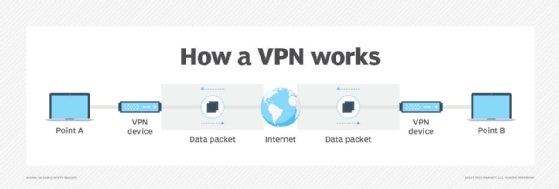Featured
Table of Contents
Vpn Won't Connect? Try These Solutions
The Routing and Remote Access snap-in lives within the Microsoft Management Console, known as the MMC. There are numerous methods to access the MMC. You can select the console from the Start menu's Programs options, within the Administrative Tools folder within Windows server's Control board or by typing mmc at a command timely.
As Tech, Republic's Brandon Vigliarolo shows within his video at the start of this short article, the Providers console displays the status of the Routing and Remote Gain access to entry. From within the Services console and with the Routing and Remote Gain access to entry highlighted, you can click Start the Service or right-click the entry and select Restart.
Often the VPN customer and VPN server are set to utilizing various authentication approaches. Confirm whether an authentication error is the problem by opening the server console. Another method of accessing the MMC is to type Control+R to open a command timely in which you can type mmc and struck Get in or click OK.
If the entry isn't present, click File, choose Add/Remove Snap-in, choose the Routing and Remote Gain access to choice from the options and click Include, then OK. With the Routing and Remote Gain access to snap-in added, right-click on the VPN server and click Residences. Then, evaluate the Security tab to verify the authentication technique.
Vpn Troubleshooting
Make sure the VPN client is set to the authentication technique defined within the Security tab. Usually the products just reviewed are responsible for many VPN connection rejection errors. Other basics must be correct, too. For instance, if the Windows Server hosting the VPN hasn't signed up with the Windows domain, the server will be not able to confirm logins.
Each Web-based VPN connection generally uses 2 various IP addresses for the VPN client computer system. This is the IP address that's utilized to establish the preliminary TCP/IP connection to the VPN server over the Internet.

This IP address generally has the exact same subnet as the regional network and hence enables the client to communicate with the local network. When you set up the VPN server, you should set up a DHCP server to assign addresses to customers, or you can create a bank of IP addresses to appoint to clients directly from the VPN server.


If this option is selected and the efficient remote gain access to policy is set to permit remote gain access to, the user will be able to connect to the VPN. I have actually been not able to re-create the scenario personally, I have actually heard rumors that a bug exists in older Windows servers that can trigger the connection to be accepted even if the efficient remote gain access to policy is set to reject a user's connection.
Fix Vpn Not Working Problems And Issues In Windows 11/10

Another common VPN problem is that a connection is effectively developed but the remote user is not able to access the network beyond the VPN server. Without a doubt, the most common cause of this problem is that authorization hasn't been given for the user to access the entire network. To allow a user to access the whole network, go to the Routing and Remote Gain access to console and right-click on the VPN server that's having the issue.
At the top of the IP tab is an Enable IP Routing check box. If this check box is made it possible for, VPN users will have the ability to access the rest of the network, assuming network firewall softwares and security-as-a-service settings permit. If the checkbox is not chosen, these users will be able to gain access to only the VPN server, however absolutely nothing beyond.
If a user is dialing straight into the VPN server, it's normally best to set up a static path between the client and the server. You can set up a fixed path by going to the Dial In tab of the user's homes sheet in Active Directory site Users and Computers and selecting the Apply A Fixed Route check box.
Click the Add Route button and then go into the location IP address and network mask in the area supplied. The metric must be left at 1. If you're using a DHCP server to designate IP addresses to customers, there are a number of other problems that could cause users not to be able to surpass the VPN server.
Why Are Streaming Services Blocked While Connected To ...
If the DHCP server designates the user an IP address that is already in use somewhere else on the network, Windows will spot the dispute and prevent the user from accessing the remainder of the network. Another typical problem is the user not receiving an address at all. Many of the time, if the DHCP server can't appoint the user an IP address, the connection won't make it this far.
254.x. x range. If the customer is appointed an address in a variety that's not present within the system's routing tables, the user will be unable to navigate the network beyond the VPN server. Other issues can contribute to this issue, too. Guarantee the resources the user is attempting to gain access to are actually on the network to which the user is linking.
A VPN connection to the other subnet might, in reality, be needed. A firewall or security as a service option might likewise be to blame, so don't forget to examine those options' settings, if such parts exist between the VPN server and the resources the user looks for to reach.
The very first possibility is that one or more of the routers included is carrying out IP packet filtering. IP package filtering could prevent IP tunnel traffic. I advise inspecting the customer, the server and any makers in between for IP packet filters. You can do this by clicking the Advanced button on each device's TCP/IP Residences sheet, picking the Options tab from the Advanced TCP/IP Settings Residence sheet, selecting TCP/IP Filtering and clicking the Residences button.
Latest Posts
Why You Need A Vpn, And How To Choose The Right One
Beginner's Guide To Vpn - Everything You Need [5000+ ...
Best Vpns For Small Businesses (2023)